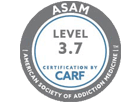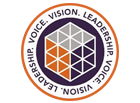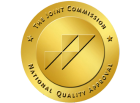As notorious drugs like heroin and cocaine continue to make a name for themselves throughout the nation, those who experiment with these substances have started to find new ways of achieving their highs.
One method that has gained popularity is called “speedballing,” in which heroin and cocaine are combined to produce a more intense and pleasurable high. While any form of substance abuse comes with risks, mixing a highly addictive stimulant and opioid is especially dangerous. Knowing what it means to speedball and how harmful this method of drug abuse can be is essential for keeping yourself and your loved ones safe.
What Is the Drug Speedball?
Speedball is a dangerous and potentially deadly combination of heroin and cocaine. It is also known as a “goofball” or a “snowball.” Despite these seemingly harmless nicknames, this combination is extremely dangerous.
The National Institute of Drug Abuse (NIDA) defines heroin as an opioid drug made from morphine that binds to opioid receptors. Heroin affects many areas in the brain, impacting a person’s experience of pain and pleasure and slowing the body’s heart rate and breathing pattern. The NIDA describes cocaine as a powerfully addictive stimulant drug that increases levels of dopamine in the brain, impacting feelings of pleasure, increasing alertness, and sensitivity to light, sound, and touch.
In other words, heroin works to slow down the central nervous system while cocaine speeds it up. When abusing these two addictive drugs together, people experience a powerful, intense high that floods the brain with dopamine.
How Do People Use A Speedball Drug?
Knowing what drugs are in a speedball is an important step in protecting yourself and your loved ones. Understanding how people abuse this combination of substances can offer more insight into the dangers of speedballing.
When taking a speedball, people typically combine heroin and cocaine in a syringe. They then inject both into the bloodstream at the same time for a faster and more intense high. People may also snort, smoke, or take the drugs orally.
Speedballs are also sometimes smoked in a joint or with a pipe. In these cases, the heroin and cocaine are usually mixed together on a piece of foil or glass and heated up to produce the vapor, which is then inhaled. Some people may even take the drugs orally, although this method tends to be less common due to the slower effects.
What Are The Risks of Mixing Heroin and Cocaine?
No matter how it is taken, speedballing is an incredibly dangerous practice. This is because mixing cocaine and heroin can cause a rapid heartbeat, an increase in body temperature, and even seizures or coma. In addition to these immediate risks, people who engage in this practice for long periods of time are at risk for addiction and other serious health complications.
Speedballing can cause a number of serious health problems, including:
- Respiratory failure
- Heart attack
- Stroke
- Seizures
- Coma
- Overdose
- Death
When combining any two drugs, it is difficult to gauge the amount of each drug taken. Due to the unpredictability and potential dangers of speedballing, this form of drug abuse can cause severe tissue damage and increase a person’s risk of overdose and death.
If you are concerned that someone in your life is abusing heroin and cocaine, it is vital to seek the help of a licensed medical professional.
Real-Life Consequences of Mixing Heroin and Cocaine
The dangers of combining drugs like heroin and cocaine are known all too well in the acting and music industry. Many famous actors and musicians have succumbed to an addiction involving these illicit drugs.
Notorious celebrities such as Janis Joplin, John Belushi, River Phoenix, and others have all died from overdosing on these drugs. Unfortunately, these famous deaths do not seem to be curbing the use of speedballs within the general population.
As recently as 2021, the National Center for Health Statistics (NCHS) recorded 24,486 deaths involving both cocaine and opioids in the United States.
Why Is Speedballing Dangerous?
There are several reasons why speedballing is so dangerous. First, the effects of stimulants and depressants can counteract each other, leading to unpredictable and potentially harmful results.
For example, the stimulant effects of cocaine can mask the depressant effects of heroin, making it difficult for users to gauge how much heroin they can safely use, leading to overdose.
There is also the issue that speedballing can increase the risk of organ damage. Cocaine is a stimulant that can put a strain on the heart and cardiovascular system, while heroin can slow down breathing and heart rate. When used together, these drugs can put an even greater strain on the body, leading to heart problems, respiratory problems, and other organ damage.
Finally, speedballing is highly addictive. Both cocaine and heroin are highly addictive drugs on their own. When used together, they can be even more habit-forming due to the way they interact with each other to create a very intense and pleasurable high. This can make it very difficult for you to quit using speedballs, even when you know it is dangerous.
What Are the Signs and Symptoms Someone is Speedballing?
Because of the serious dangers that come with speedballing, it is important to know how to recognize the signs and symptoms of this substance use behavior. It can take an especially trained eye to recognize the signs of combined heroin and cocaine use, but some of the most common signs and symptoms include:
- Changes in physical appearance, such as poor hygiene and lack of effort in self-care.
- Getting into financial or legal trouble.
- Increased social withdrawal and relationship issues.
- New or worsened physical and mental health problems.
- Drug paraphernalia in the person’s general surroundings.
- Becoming more secretive or isolated.
- Developing withdrawal symptoms when not using cocaine or heroin.
If you recognize any of these signs in yourself or a loved one, it is important to seek professional help as soon as possible. Both heroin and cocaine abuse can have serious consequences on their own, with these side effects only intensifying when combined.
Treating Polysubstance Abuse
Recovering from a simultaneous addiction to both cocaine and heroin can be overwhelming and complicated. However, with the right treatment and support, it is possible to overcome polysubstance abuse.
There are many different ways to treat a polysubstance addiction. While the best approach will vary depending on your specific situation and needs, some of the common polysubstance treatment methods include:
- Detoxification: This involves removing the substances from your body while under regular medical supervision. Detox can be a difficult and uncomfortable process, but it is essential for the first step of recovery.
- Therapy: Therapy can help you understand the root causes of your addiction and develop coping mechanisms to avoid relapse. There are many different types of therapy available, such as cognitive-behavioral therapy (CBT) and group therapy, as well as more experiential and holistic therapies.
- Medications: There are a number of medications that can be used to treat polysubstance abuse. These medications can help to reduce cravings, withdrawal symptoms, and other symptoms of addiction.
- Support groups: Support groups can provide you with a safe and supportive space to share your experience and learn from others who are also in recovery. There are many different types of support groups available, such as 12-step programs and secular alternative organizations.
If you or someone you know is struggling with polysubstance abuse, please seek professional help. There is no shame in asking for help, and there are many resources available to support you on your journey to recovery.
Addiction Treatment at Royal Life Centers
At Royal Life Centers, we strive to provide comprehensive and compassionate care to all of our clients, regardless of their background or the type of addiction they are struggling with. We understand the complicated nature of polysubstance abuse and are equipped to help you overcome both of your addictions.
When you choose to recover at one of our rehab centers, you will have access to a variety of heroin and cocaine addiction treatment services, including:
- Medical detox
- Residential treatment
- Partial hospitalization
- Intensive outpatient treatment
- Behavioral and holistic therapies
- Aftercare services
Our full continuum of care offers you the flexibility and variety you need to make sure each aspect of your addiction is being properly addressed. We will work with you to understand your specific care needs and build a treatment plan that caters to each and every one of them.
Making the decision to get help and overcome your substance abuse can be scary, but we are here to make this process easier every step of the way. Call us at 877-RECOVERY to learn more about how you can get started on your path to long-term recovery today!


























